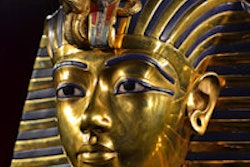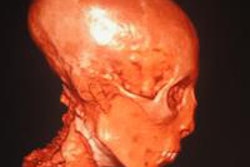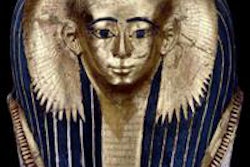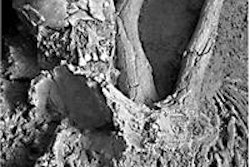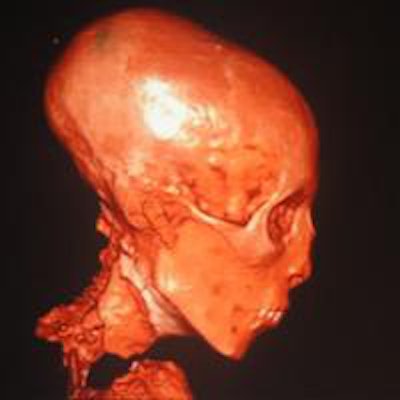
DUBAI - Imaging investigations of ancient Egypt's royal mummies may start again in the near future, but this depends on getting the all-important green light from the country's senior politicians, according to the head of the medical team that has conducted previous examinations.
 The ancient Egyptians really knew their anatomy, according to Dr. Ashraf Selim.
The ancient Egyptians really knew their anatomy, according to Dr. Ashraf Selim."We really hope to resume our work soon and we have made the applications to do so, but first we need to get government approval," said Dr. Ashraf Selim, professor of radiology at Cairo University, in an interview after his opening lecture at this week's International Congress of Radiology (ICR 2014). "We are not harming anything or doing any damage, but not everyone agrees."
As soon as his team has obtained the necessary consent, the plan is to concentrate efforts on the remaining 300 or so royal mummies, making the most of technological advances that have occurred in CT since the investigations were halted due to Egypt's political instability. He confirmed that government approval is the only remaining obstacle that must be overcome.
Among the royal mummies already examined by his team are Tutankhamen, a young woman thought to be Nefertiti, Akhenaton, Amenhotep III, Yuya and Thuya, Thutmose II and III, Hatshepsut, and Ramses II and III. However, because the mummies are so well-preserved, Selim believes that many more secrets still need to be revealed from what happened more than 5,000 years ago.
"These people really knew their anatomy," he told ICR delegates of the ancient Egyptians who performed the mummification. "The first step in mummification was to introduce an iron rod in one of the nostrils, breaking the cribriform plate of the ethmoid bone, which is the thinnest part of the skull base, so they could extract all the brain out of the nostrils, and then they poured in the embalming material."
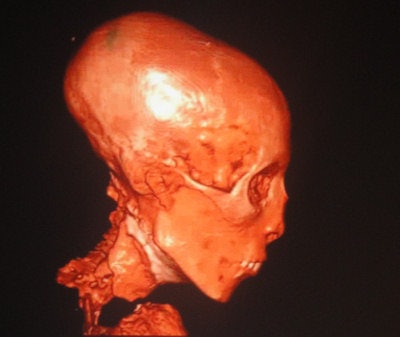 Top: Color volume-rendered CT scan of King Tutankhamen shows his elongated skull with an overbite. Bottom: CT images of his skull. All images courtesy of Dr. Ashraf Selim.
Top: Color volume-rendered CT scan of King Tutankhamen shows his elongated skull with an overbite. Bottom: CT images of his skull. All images courtesy of Dr. Ashraf Selim.
Because the organs were full of water and would putrefy, the ancient Egyptians removed them and stored them in canopic jars put next to the mummies' bodies. This was done to ensure that the mummies would enter the afterlife, Selim explained. They removed all organs except the heart, because they were convinced the soul returned via the heart.
Complete dehydration was essential to achieve successful mummification, he added. The ancient Egyptians did that by packing the body with linen bandages soaked in natural salt, which imbibed water from the tissues, and they also added ointments to make sure the body smelt pleasant. Then they left the body to dry out for between 40 days and 70 days, which is why some Arab cultures still celebrate the 40th day after a death has occurred.
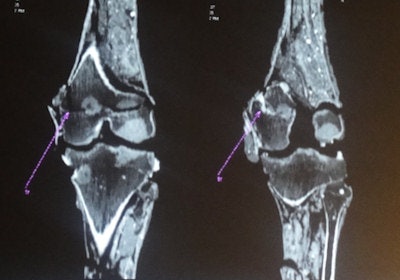 Coronal ultrathick multiplanar reconstruction (MPR) CT image of the lower part of the femur of King Tutankhamen. Note the fracture of the metaphyseal region with cracks traversing the resin used in the mummification process. The arrow points to the fracture with a thin layer of dense embalming material covering the fractured edges.
Coronal ultrathick multiplanar reconstruction (MPR) CT image of the lower part of the femur of King Tutankhamen. Note the fracture of the metaphyseal region with cracks traversing the resin used in the mummification process. The arrow points to the fracture with a thin layer of dense embalming material covering the fractured edges.Selim has worked with the world-renowned archaeologist Zahi Hawass, who served as minister of state for antiquities under former President Hosni Mubarak. Hawass thinks the upheaval that Egypt has experienced since 2011 mirrors the century of chaos that preceded Mentuhotep II's accession to the Egyptian throne in 2046 BC; Mentuhotep restored order to Egypt, much as Abdel Fattah al-Sisi is trying to do today, according to media interviews with Hawass.
Now that more peaceful times have returned to Egypt, Selim and his colleagues hope to make many more discoveries about the ancient mummies over the coming years.
Editor's note: Look out for Dr. Adrian Thomas' upcoming history column about Egyptology.
For our gallery of photos from the Dubai meeting, please click here and scroll to the bottom of the article.




